I’m unashamedly a numbers nerd and combined with my love of videogames, this has meant that I’ve very closely followed gaming sales figures over the years. System wars where sales figures were at the centre of everything were much more of a thing in previous generations (particularly the PS36Wii years – I remember signing up for VGChartz a decade ago in excitement to view their numbers despite everything being estimates based on algorithms), yet looking into the past can provide a very interesting case study to examine a console’s place in history. For Vita, this means its position relative to other failed consoles (for example the Dreamcast’s meagre 9m units compared to the PS2’s mammoth 155m) and an examination of what it got right and what it got wrong (for example, Dreamcast managed to make a decent impact in certain regions and maintains a cult following to this day).
Unfortunately, Sony have continually obscured Vita’s sales figures ever since it failed to meet its initial financial year target (the numbers were combined with PSP at the time and then hidden from view after that) which has meant that studying them and drawing conclusions has been difficult. Yet there are trackers out there that provide glimpses into hardware and software amounts and looking at these gives us a clearer picture of how Vita did. I spent some time compiling what I could find together and aim to examine the available numbers in this article to hopefully provide what may well be the only in depth analysis of Vita’s commercial performance out there!
Hardware Sales
Let me preface this section by reminding you that the only official numbers we have for Vita are 1.2m just after its western launch and 4m within 10 months, after which Sony started combining its reported numbers with the PSP to hide the fact that their newest handheld was missing all of its sales targets.
After this, we only have estimates including EEDAR suggesting 10m by the end of 2015, Glixel throwing in 15m by mid 2017 and USGamer considering the handheld finished at around 16m. Of these, only EEDAR really has any credibility as they are part of the NPD Group that actually track console and game sales in the USA (more on this later), but even then I would suggest that they do not have the capability to fully predict worldwide sales. However, my own research suggests that Vita has safely passed the 10m mark which I’ve worked out by combining figures from multiple trackers around the world into one spreadsheet – you can view this here (it may be a little difficult to interpret, but shows sales per region by year, divided into quarters).
There’s a few interesting points to take away from this data:
 Japan – This is undoubtedly Vita’s strongest market for hardware sales, clocking in at just shy of 6 million (it likely shipped this amount). This gives it nearly half of the known Vita sales worldwide and even if we take USGamer’s 16m as correct, Japanese sales count as more than a third of this total. The peak year is 2013 (1.224m) which saw the release of the PSTV and Vita Slim hardware, a ¥5000 price drop plus games like God Eater 2 and Soul Sacrifice, followed by 2014 (1.168m) which saw games like Freedom Wars and Sword Art Online: Hollow Fragment land and 2015 (1.069m) which was heavily carried by Minecraft. Things tapered off after that and it’s worth noting that Vita took a while to get going, selling an embarrassingly low 690k in 2012.
Japan – This is undoubtedly Vita’s strongest market for hardware sales, clocking in at just shy of 6 million (it likely shipped this amount). This gives it nearly half of the known Vita sales worldwide and even if we take USGamer’s 16m as correct, Japanese sales count as more than a third of this total. The peak year is 2013 (1.224m) which saw the release of the PSTV and Vita Slim hardware, a ¥5000 price drop plus games like God Eater 2 and Soul Sacrifice, followed by 2014 (1.168m) which saw games like Freedom Wars and Sword Art Online: Hollow Fragment land and 2015 (1.069m) which was heavily carried by Minecraft. Things tapered off after that and it’s worth noting that Vita took a while to get going, selling an embarrassingly low 690k in 2012.
The reasons for its strong performance in Japan are numerous – handhelds have traditionally sold well in the region, it received price drops, hardware bundles/bespoke models and TV advertising throughout its life and most importantly, Sony and third parties made sure it had a stream of regionally-relevant software (more on this later). With that said, it still sold a relatively low amount in the land of the rising sun (PSP cracked 20m and 3DS reached 24m) but both those machines were blessed with big IP’s like Dragon Quest and Monster Hunter and seemed more commercially appealing in general. Vita’s sales leave it in this weird middle ground where it’s not a disaster (Dreamcast’s sub 3m and Wii-U’s 3.3m in the region) but hardly a success either (oddly it aligns very closely with the Saturn which sold 5.75m in Japan).
 Spain – Interestingly, Spain was a massively successful market for Vita where it sold 600k by mid-2015. To put this in perspective, PS4 (one of the most successful consoles of all time) had sold 700k by the same point while the Xbox One had sold a mere 78k (it’s almost certain that Vita will have outsold XB1 in Spanish lifetime sales even at the date of this article). Spain is a much smaller market than the big three (Japan, the UK and the USA) but this is still a significant performance considering how much Sony’s handheld struggled in the rest of Europe.
Spain – Interestingly, Spain was a massively successful market for Vita where it sold 600k by mid-2015. To put this in perspective, PS4 (one of the most successful consoles of all time) had sold 700k by the same point while the Xbox One had sold a mere 78k (it’s almost certain that Vita will have outsold XB1 in Spanish lifetime sales even at the date of this article). Spain is a much smaller market than the big three (Japan, the UK and the USA) but this is still a significant performance considering how much Sony’s handheld struggled in the rest of Europe.
The reasons are very similar to those in Japan – there was a big regional effort to push the machine with adverts, bundles and software targeted at Spanish gamers. In particular, Sony Iberia and their regional head James Armstrong aimed to make the handheld attractive to children with games like Looney Tunes, Phineas & Ferb and there were even titles that only released in Spain like Tadeo Jones, which appeared to work – Invizimals in particular had been a big deal on the PSP and this appeared to extend to Vita.
 The USA – America is traditionally the biggest market in the world for consoles and handhelds but Vita really struggled there, failing to gain any major market share. It sold okay in its first year clearing 1.277m (beating Japan’s peak year) but it fell sharply after this, managing a meager 427k in 2014 which was the year the PSTV and Vita Slim came west. The figures I have for the region are incomplete (only bits of data after March 2015) but even then, it appears to have sold significantly less than half of what Vita sold in Japan which is abysmal for such a large market.
The USA – America is traditionally the biggest market in the world for consoles and handhelds but Vita really struggled there, failing to gain any major market share. It sold okay in its first year clearing 1.277m (beating Japan’s peak year) but it fell sharply after this, managing a meager 427k in 2014 which was the year the PSTV and Vita Slim came west. The figures I have for the region are incomplete (only bits of data after March 2015) but even then, it appears to have sold significantly less than half of what Vita sold in Japan which is abysmal for such a large market.
The reason for this is because the regional heads at Sony NA basically did the opposite of their counterparts in Japan and Spain – there was little advertising, precious few hardware bundles after the first year and no regionally relevant software to speak of. The North American branch went big in the first year with things like Uncharted and Unit 13 but after that their contribution to Vita releases was years late ports of things like Borderlands 2 and The God of War Collection – hardly what the console needed to help it recover.
 Rest of the World – Obviously, this is analysis so far has been just three countries out of many that Vita was available in, but unfortunately figures for other areas are far more difficult to come across. For example, we know in France Vita sold 535k by the start of 2017 (at which point it was basically discontinued) which compares favourably to Spain, but notably lower for what is generally a bigger market. Other European figures are more difficult to come across, although I managed to uncover that Vita sold 403k lifetime in Germany (paling in comparison to its neighbours) and 100k in the UK by the end of June 2012. Rather amusingly, Nintendo provided a figure of 1.164m for Vita in the whole of Europe for 2012 (presumably based on their own calculations) and that shows us that Europe and the USA were both performing similarly in the console’s launch year.
Rest of the World – Obviously, this is analysis so far has been just three countries out of many that Vita was available in, but unfortunately figures for other areas are far more difficult to come across. For example, we know in France Vita sold 535k by the start of 2017 (at which point it was basically discontinued) which compares favourably to Spain, but notably lower for what is generally a bigger market. Other European figures are more difficult to come across, although I managed to uncover that Vita sold 403k lifetime in Germany (paling in comparison to its neighbours) and 100k in the UK by the end of June 2012. Rather amusingly, Nintendo provided a figure of 1.164m for Vita in the whole of Europe for 2012 (presumably based on their own calculations) and that shows us that Europe and the USA were both performing similarly in the console’s launch year.
There’s huge chunks of the world that we don’t have any numbers from though – Canada and smaller European countries spring to mind, but we’re also missing all of Australasia and South America. These aren’t major markets, but they do add up to a total that will forever remain unknown. What are more significant are Asian countries, particularly places like Singapore and Taiwan that received a spree of English physical releases that we didn’t get in the west and also supported localised Chinese versions of Japanese titles, which suggests a thriving market. Frustratingly Japanese sales tracker Media Create started reporting numbers for South Korea and Taiwan from 2018, but Vita was effectively discontinued by this point and they haven’t provided any historical figures. It’s also a question mark how the handheld did in China after it officially launched – we only know it sold 21k within a month.
Japanese Software Sales
Now this is the area I can provide much greater analysis of thanks to two trackers – Famitsu and Media Create – that provide a great insight of the Japanese gaming market. I prefer Media Create as they provide an end of year top 1000 list which gives the biggest overview of software sales (and I’ll be using their figures for this article – spreadsheet here), but as long as you pick one tracker and stick to them, you can can’t go wrong.
 The most noteworthy Vita game in Japan is Minecraft which sold a staggering 1.32m copies in the region (nearly triple the second place title) and this isn’t even counting digital sales which supposedly were very strong for it (Famitsu estimates at least a further 300k). Minecraft undoubtedly gave Vita a second wind in Japan, coming along in 2015 and making the console more attractive to younger gamers, who asked it at holidays such as Christmas and Obon alongside a copy of Mojang’s hit builder. This is most evident in its sales curve which started out low (36k) yet it just kept charting week after week, nearly selling as much in 2016 as the year it launched.
The most noteworthy Vita game in Japan is Minecraft which sold a staggering 1.32m copies in the region (nearly triple the second place title) and this isn’t even counting digital sales which supposedly were very strong for it (Famitsu estimates at least a further 300k). Minecraft undoubtedly gave Vita a second wind in Japan, coming along in 2015 and making the console more attractive to younger gamers, who asked it at holidays such as Christmas and Obon alongside a copy of Mojang’s hit builder. This is most evident in its sales curve which started out low (36k) yet it just kept charting week after week, nearly selling as much in 2016 as the year it launched.
However, few other publishers attempted to take advantage of this new kid-friendly user base which explains why Vita continued to decline after 2015 despite Minecraft doing the heavy lifting. One notable exception is Dragon Quest Builders which cleared 300k on the console and it’s worth pointing out that Terraria showed good legs too at 105k from a 15k opening. A few other publishers attempted scattered bits of kid-friendly software after this including Konami with Jikkyou Powerful Pro Baseball (the 2016 entry sold a solid 240k the year after Minecraft) and Bandai-Namco with Taiko no Tatsujin V Version (a more muted 172k). Had there been a better effort with this, I’m sure we’d have seen more successes.
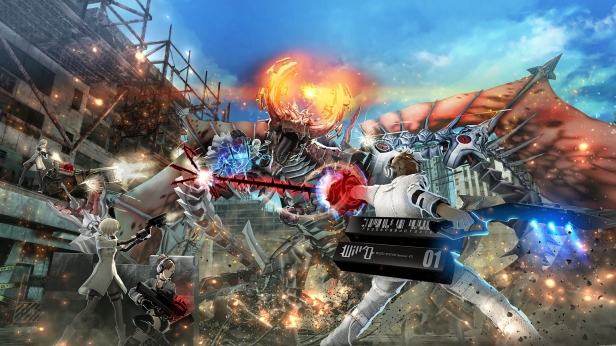 In second place is God Eater 2 with 456k which marks a good place to chat about another important element of the Japanese Vita market – hunting games. Sony placed a big emphasis on these ever since losing Monster Hunter to Nintendo and Vita saw some big successes, notably God Eater (which led on Vita despite a simultaneous PSP release), Toukiden (which sold 241k on Vita and was a big success for Koei-Tecmo, spawning an expansion and a sequel) and Freedom Wars (which had the biggest launch for a new Sony IP in years – 188k first week). Not everything was a hit and notably Phantasy Star Nova underperformed at 174k compared to the 500k+ of PSP Portable entries, but generally the theme was that Vita was the new home of hunting game fans.
In second place is God Eater 2 with 456k which marks a good place to chat about another important element of the Japanese Vita market – hunting games. Sony placed a big emphasis on these ever since losing Monster Hunter to Nintendo and Vita saw some big successes, notably God Eater (which led on Vita despite a simultaneous PSP release), Toukiden (which sold 241k on Vita and was a big success for Koei-Tecmo, spawning an expansion and a sequel) and Freedom Wars (which had the biggest launch for a new Sony IP in years – 188k first week). Not everything was a hit and notably Phantasy Star Nova underperformed at 174k compared to the 500k+ of PSP Portable entries, but generally the theme was that Vita was the new home of hunting game fans.
Another staple of Vita’s Japanese library was anime games, mainly supplied by Bandai-Namco who saw some smash hits on the hardware. The high bar is Sword Art Online: Hollow Fragment which sold a mammoth 286k and spawned a sea of sequels and secured the franchise as a hot gaming property for years. Other big releases included One Piece Pirate Warriors 2 (127k) and its sequel (160k), J-Stars Victory Vs (170k) plus a sea of Gundam titles of which Mobile Suit Gundam: Extreme Vs Force is the biggest seller (177k, although it was overshipped and poor word of mouth killed its sales over time). The three Gundam Breaker titles were probably the most successful in the Gundam property (2 and 3 each cleared 130k).
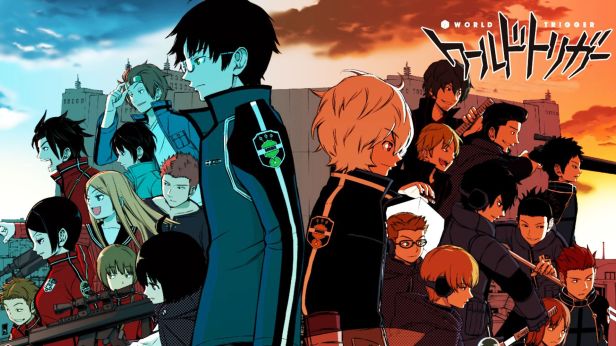 Selling 100k+ isn’t the barometer of success though and plenty of anime projects were viable at smaller numbers, such as World Trigger: Borderless Mission at 61k and even Dengeki Bunko: Fighting Climax at 51k spawned an expanded re-release. This brings me eloquently onto my next point, which is the low-to-mid tier market on Vita, supported by developers who make titles with low budgets hoping for an unexpected success. This first became important in January 2013, with the release of Demon Gaze and Monster Monpiece, both of which sold beyond their publisher’s expectations (77k for the former, 50k for the latter and they both completely sold out at launch).
Selling 100k+ isn’t the barometer of success though and plenty of anime projects were viable at smaller numbers, such as World Trigger: Borderless Mission at 61k and even Dengeki Bunko: Fighting Climax at 51k spawned an expanded re-release. This brings me eloquently onto my next point, which is the low-to-mid tier market on Vita, supported by developers who make titles with low budgets hoping for an unexpected success. This first became important in January 2013, with the release of Demon Gaze and Monster Monpiece, both of which sold beyond their publisher’s expectations (77k for the former, 50k for the latter and they both completely sold out at launch).
This led to a spree of games that weren’t necessarily smash hits, but consistently over-performed – titles such as Bullet Girls, Moero Chronicle and Omega Labyrinth all sold 50-60k for their publishers which was enough for them to turn into franchises spawning multiple sequels and contributed to increased earnings for Compile Heart and D3 Publisher. The linked element between these is that they’re all lewd games and indeed Senran Kagura: Shinovi Versus helped solidify this market with 176k in February 2013 on the back of an anime, but not every surprise hit was lewd – The Caligula Effect (48k), Shiren the Wanderer 5 Plus (43k) and Yomawari: Night Alone (42k) all managed to surpass expectations.
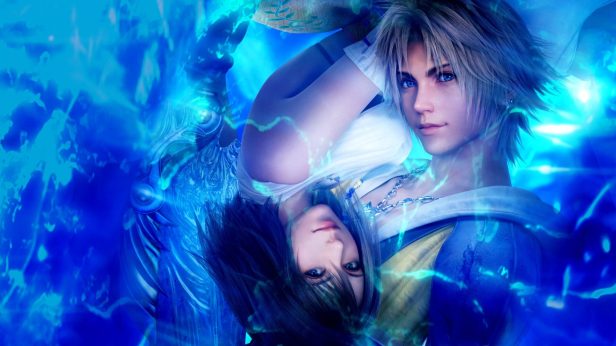 Japanese gamers were also interested in ports of older titles, a trend that started with Persona 4 Golden‘s 137k in 2012 (it eventually sold nearly triple that thanks to a budget re-release and the anime airing) and continued through 2013 with Muramasa Rebirth (131k) and Final Fantasy X/X-2 (sold individually and as a bundle, more than 500k copies between them). Even Metal Gear Solid HD Collection started low (23k) but legged its way to 115k thanks to a budget version. Similarly, many visual novels and other PSP games such as Hakuoki and Steins;Gate were ported to Vita where they found a new lease of life.
Japanese gamers were also interested in ports of older titles, a trend that started with Persona 4 Golden‘s 137k in 2012 (it eventually sold nearly triple that thanks to a budget re-release and the anime airing) and continued through 2013 with Muramasa Rebirth (131k) and Final Fantasy X/X-2 (sold individually and as a bundle, more than 500k copies between them). Even Metal Gear Solid HD Collection started low (23k) but legged its way to 115k thanks to a budget version. Similarly, many visual novels and other PSP games such as Hakuoki and Steins;Gate were ported to Vita where they found a new lease of life.
Then there are those games that shared a release with the PS3 or PS4 and between the two versions were incredibly successful. Companies like Bandai-Namco took advantage of this with releases like 3rd Super Robot Wars Z (344k between two entries), Koei-Tecmo did the same with Attack on Titan (157k) while Falcom made sure their Legend of Heroes series didn’t decline moving away from PSP by grabbing a large chunk of sales from Vita for Trails of Cold Steel then got the remainder from PS3. This does however highlight Vita’s weakness in the market – it was a strong part of the ‘PlayStation ecosystem’ that Sony cultivated across their three platforms at the time, but often wasn’t strong enough to carry bigger titles on its own thanks to its limited userbase.
 And of course, since we have the numbers I do have to talk failures on Vita– which isn’t necessarily indicative of its commercial performance as all consoles, even successful ones like 3DS and Switch, see games under-perform (look to Gaist Crusher on 3DS for an example of a mega-bomb). Aside from the aforementioned Phantasy Star Nova, KanColle Kai was a title early predictions pegged as being a half million seller but it managed only 200k, Tales of Hearts R sold just 91k and ensured that the teased Tempest R never happened and the video-recording dating sim Reco Love at 26k failed to sell even half of the 81k its photography-sim predecessor did on Vita (which is amusing since PhotoKano was a re-release of a PSP title). There are of course more than this, but these ones stand out to me.
And of course, since we have the numbers I do have to talk failures on Vita– which isn’t necessarily indicative of its commercial performance as all consoles, even successful ones like 3DS and Switch, see games under-perform (look to Gaist Crusher on 3DS for an example of a mega-bomb). Aside from the aforementioned Phantasy Star Nova, KanColle Kai was a title early predictions pegged as being a half million seller but it managed only 200k, Tales of Hearts R sold just 91k and ensured that the teased Tempest R never happened and the video-recording dating sim Reco Love at 26k failed to sell even half of the 81k its photography-sim predecessor did on Vita (which is amusing since PhotoKano was a re-release of a PSP title). There are of course more than this, but these ones stand out to me.
In total, more than 24m physical Vita games were solid in Japan which is likely the highest figure anywhere in the world and shows a great attach rate compared to 6m consoles.
American Software Sales
Much like Famitsu and Media Create in Japan, the NPD Group track hardware and software sales in the USA although unlike those two entities, these figures mostly stay hidden except for paying subscribers. Thankfully over the years, various leakers (memorably crazybuttocksonatrain) have given us little tid-bits of information that help give us some insight into the market.
 I’ve compiled the leaked figures here and when combined with this official tweet, we at least have a view as to the most successful software in the reunion. Unsurprisingly, launch year titles dominate the charts and Uncharted: Golden Abyss was the biggest seller with approximately 350k copies, with Mortal Kombat a distant second at approximately 250k (which in perspective is good performance for a very late port). There’s every chance these numbers are higher now as they haven’t been updated since 2013 – Assassin’s Creed III: Liberation and Call of Duty: Black Ops Declassified eventually climbed higher than Mortal Kombat as well, although it’s unclear whether these include bundled copies or not.
I’ve compiled the leaked figures here and when combined with this official tweet, we at least have a view as to the most successful software in the reunion. Unsurprisingly, launch year titles dominate the charts and Uncharted: Golden Abyss was the biggest seller with approximately 350k copies, with Mortal Kombat a distant second at approximately 250k (which in perspective is good performance for a very late port). There’s every chance these numbers are higher now as they haven’t been updated since 2013 – Assassin’s Creed III: Liberation and Call of Duty: Black Ops Declassified eventually climbed higher than Mortal Kombat as well, although it’s unclear whether these include bundled copies or not.
On the lower end of the spectrum, seeing things like Demon Gaze outselling Street Fighter x Tekken in their respective first months (6k vs 5k) is surprising and shows how the demographic for the platform shifted over the years. Similarly, Conception II: Children of the Seven Stars sold about a third more on Vita than 3DS first month (18k vs 13k) and shows that Sony’s handheld was a solid enough place for niche releases over its competitor despite their difference in userbase. Both DanganRonpa 2 and Another Episode sold 10-12k in their respective first months showing some audience retention, although the big success in this regard is Persona 4 Golden but I can’t provide much more of an exact figure than it being above 100k based on its placement in the 2018 table compared to previously leaked figures.
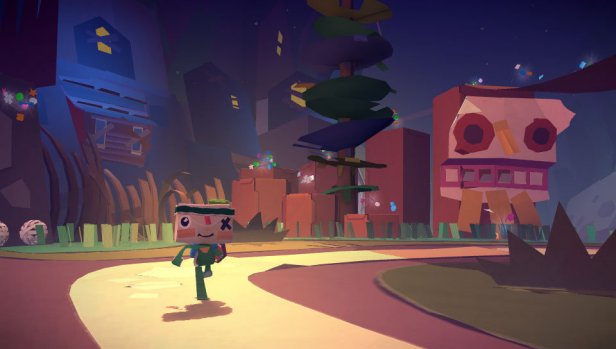 For every hit (I’d mention Sly Cooper: Thieves in Time sold oddly well at 67k) Vita saw, there was a disaster – Tearaway sold a miserable 14k in its first month and eventually legged its way to 75k which is still poor for such a unique and charming new IP. In general software figures in America were very low (remember Japan, a much smaller market, saw Minecraft sell more than a million and multiple other titles with better numbers than these) likely hampered by its weak hardware sales, although the big question mark is how much digital contributed as we know that the market for downloadable software grew significantly while Vita was alive.
For every hit (I’d mention Sly Cooper: Thieves in Time sold oddly well at 67k) Vita saw, there was a disaster – Tearaway sold a miserable 14k in its first month and eventually legged its way to 75k which is still poor for such a unique and charming new IP. In general software figures in America were very low (remember Japan, a much smaller market, saw Minecraft sell more than a million and multiple other titles with better numbers than these) likely hampered by its weak hardware sales, although the big question mark is how much digital contributed as we know that the market for downloadable software grew significantly while Vita was alive.
European Software Sales
Much like with hardware figures, software sales are much harder to come across for Vita in Europe and there’s not a great deal I can post about here – although we do have little bits of insight that I’ve complied here.
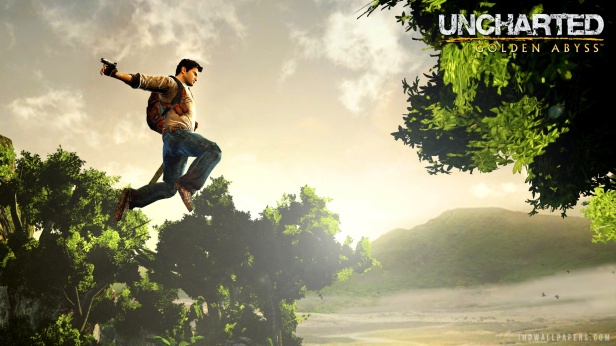 These are overviews of three of the biggest markets in Europe – France, Spain and the UK and how much Vita physical software was sold in each of them per year, but as you can see the data is fragmented and incomplete. What is interesting to see is how each market shifted over time – in the UK for example, 2012 software sales were likely very high as 219k games were sold in December alone compared to 308k for Spain for the whole year, but by 2014 the balance had shifted well and truly in favour of Spain and by 2016 the ratio was about 2:1 Spanish:UK software sales. France also held up better than the UK but even then it doesn’t compare to their Iberian neighbours – I’m not quite sure why this is, but I suspect it’s to do with the fact that there were hardware bundles and two Invizimals titles by that point.
These are overviews of three of the biggest markets in Europe – France, Spain and the UK and how much Vita physical software was sold in each of them per year, but as you can see the data is fragmented and incomplete. What is interesting to see is how each market shifted over time – in the UK for example, 2012 software sales were likely very high as 219k games were sold in December alone compared to 308k for Spain for the whole year, but by 2014 the balance had shifted well and truly in favour of Spain and by 2016 the ratio was about 2:1 Spanish:UK software sales. France also held up better than the UK but even then it doesn’t compare to their Iberian neighbours – I’m not quite sure why this is, but I suspect it’s to do with the fact that there were hardware bundles and two Invizimals titles by that point.
Thanks to some revealed numbers, we also have a little bit of data about certain games in Spain – unsurprisingly, two of the top sellers are the usual suspects in Uncharted: Golden Abyss at 62k and Call of Duty: Black Ops Declassified at 60k, but you can also see some strongly-performing kid-focused games in the chart too. Invizimals: The Alliance sold 47k (Spain has always been a stronghold for the franchise) and two LEGO games performed well, notably LEGO Marvel Super Heroes: Universe in Peril at 34k (likely selling to the Invizimals audience). Meanwhile, Everybody’s Golf did quite poorly at 4k (we also have a figure of 9k for WRC 5 which sort of explains why we got so many of these EuroSport titles as that entry was slated by critics but still sold relatively well enough for one country).
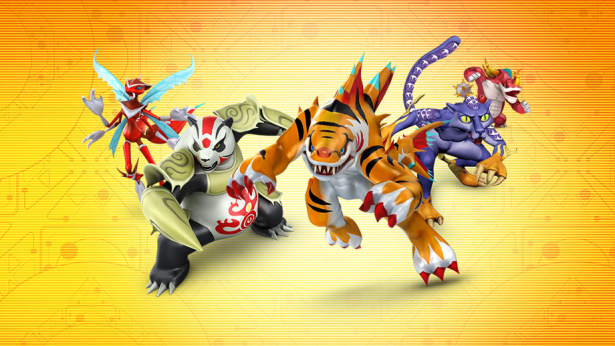 The big winner was Minecraft at nearly 120k, which is almost as much as the Xbox 360 and Xbox One versions combined at the same point in time and significantly more than the version on another failed console (Wii-U). It’s a small victory, but a victory all the same and shows that Spain was well and truly Sonyland during Vita’s life.
The big winner was Minecraft at nearly 120k, which is almost as much as the Xbox 360 and Xbox One versions combined at the same point in time and significantly more than the version on another failed console (Wii-U). It’s a small victory, but a victory all the same and shows that Spain was well and truly Sonyland during Vita’s life.
Worldwide Software Shipments
In general, publishers weren’t forthcoming with reporting figures for their games on Vita but we do have some numbers which have been released – I previously wrote about 10 of them here and it’s worth expanding on this a little.
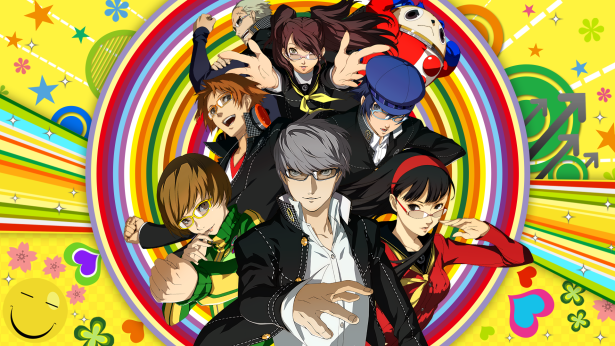 Interestingly, at the time I wrote that article, Persona 4 Golden was reported as having sold 700k copies worldwide but since then we’ve had a more updated figure from Atlus showing it has actually sold 1.5m. That makes it a huge success for what was a relatively niche JRPG series until recently and Vita’s top-selling reported title, although it is likely beaten by Call of Duty, Minecraft and Uncharted (which we unfortunately don’t have numbers for). It also puts it handily ahead of the 600k sales which Assassin’s Creed III: Liberation saw – a solid enough performance for Ubisoft to report it, but worlds away from the big numbers the franchise was pulling on home consoles.
Interestingly, at the time I wrote that article, Persona 4 Golden was reported as having sold 700k copies worldwide but since then we’ve had a more updated figure from Atlus showing it has actually sold 1.5m. That makes it a huge success for what was a relatively niche JRPG series until recently and Vita’s top-selling reported title, although it is likely beaten by Call of Duty, Minecraft and Uncharted (which we unfortunately don’t have numbers for). It also puts it handily ahead of the 600k sales which Assassin’s Creed III: Liberation saw – a solid enough performance for Ubisoft to report it, but worlds away from the big numbers the franchise was pulling on home consoles.
Otherwise, most of the reported figures don’t show anything we don’t already know – many publishers combined the sales of their multi-plat games for which we know that Dragon’s Crown sold 940k across PS3 and Vita, but we don’t know what the individual platform breakdown is. The same goes for Root Letter (300k across PS4 & Vita), Toukiden (550k across PSP & Vita) and Trails of Cold Steel I & II (900k across PS3 & Vita), but we do know that Demon Gaze sold 200k on Vita alone, Sword Art Online: Hollow Fragment reached 450k just on Vita and DanganRonpa 1 & 2‘s 200k in the west was cause for celebration for NIS America.
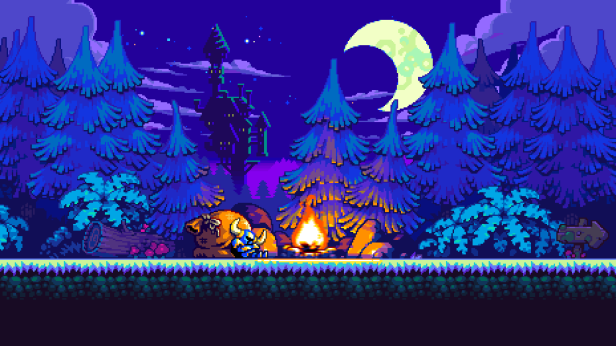 Occasionally, indies release their sales figures too – such as a breakdown by Yacht Club Games of 2m copies sold for Shovel Knight (we can calculate from this that Vita sold approximately 30k of those, but this isn’t counting cross-buy PS4 versions), while Drinkbox announced that Guacamelee sold “very well” on Vita (without giving figures). It’s certainly not all sunshine though – Super Icon revealed that developing for Vita had “financially ruined” them, although I suspect it wasn’t just Vita that was holding them back as the company as a whole closed its doors for good five years later after trying out other consoles.
Occasionally, indies release their sales figures too – such as a breakdown by Yacht Club Games of 2m copies sold for Shovel Knight (we can calculate from this that Vita sold approximately 30k of those, but this isn’t counting cross-buy PS4 versions), while Drinkbox announced that Guacamelee sold “very well” on Vita (without giving figures). It’s certainly not all sunshine though – Super Icon revealed that developing for Vita had “financially ruined” them, although I suspect it wasn’t just Vita that was holding them back as the company as a whole closed its doors for good five years later after trying out other consoles.
Conclusion
Overall, there’s no getting away from the fact that the Vita was a commercial failure in the market. Its hardware sales (minimum of 10.5m, maximum of 16m) mean it beat SEGA’s trio of unsuccessful 90’s consoles (Dreamcast, Saturn and Game Gear) and likely beat Nintendo’s Wii-U too, but this is a very low bar to aim for given that these are some of the worst selling mainstream gaming machines ever created. It also failed to create any software which sold significant volumes, which is part and parcel with the lack of success of its hardware.
However, as this article has hopefully demonstrated, it wasn’t all doom and gloom for Vita and in some parts of the world the machine was a surprising success. Japan for example had a successful software ecosystem and the hardware outsold consoles such as the SEGA Genesis/Mega Drive and N64, while Spain was a European stronghold where both software and hardware sold well and in particular a younger audience was cultivated on Invizimals and Minecraft. Conversely, two of the world’s biggest markets – the UK and USA – failed to embrace the machine in any meaningful way and helped contribute to its poor performance.
It’s disappointing that Sony constantly obscured Vita’s sales figures making it difficult to work out how the machine sold as I find it fascinating to analyse numbers whether a console is successful or not, but hopefully this article at least gives a better oversight of the situation. It’s also a shame the Vita wasn’t embraced more during its lifespan – as we often see for failed consoles (see: Dreamcast), Sony’s handheld seems to be more popular now than it ever was in life as more gamers begin to discover what delights it has to offer. It just makes me glad I jumped on board when I did and rest assured I have plenty more Vita gaming to do going forward!

I’m surprised about Tearaway. I genuinely thought it performed better than stated here.
Do you know how well the Vita went in the PAL regions?
LikeLiked by 1 person
Tearaway was a very sad case because it was very clearly lovingly crafted for Vita but was never really embraced. It probably did slightly better in Europe than NA because of the built-in kid-friendly audience, but it was dead on arrival in Japan unfortunately.
The only PAL numbers I have are those in the PAL software spreadsheet and Vita hardware spreadsheet, which is basically that it had pockets of success (Spain, arguably France) and areas where it drastically underperformed (UK).
LikeLike
Great analysis.
I’m from Spain, and it’s a surprise for me that my country have these numbers.
Very interesting, really.
LikeLiked by 1 person
Thank you for the kind words. Your country is one of only two regions where I would say Vita sold “decently” so you will have to tell your fellow countrymen thank you!
I take it from your comment that it wasn’t obvious in terms of being out and about that Vita had sold relatively well?
LikeLike
Interesting regional perspective and glimpse into Vita’s regional successes and failures. I am Canadian and bought the Vita just after the launch. In my regional experience, (Canada is a large country) there was literally little to no effort put into marketing the device or software here. Given the very few physical titles I saw on the shelves at EBGames/Gamestop, I honestly thought the Vita was dead very early in it’s life cycle. As for the PSTV, I personally never recall any promotion or marketing around it ever!!!! When I did hear about it (long after they stopped producing it), I thought it was a platform to view regional television channels and watch movies. Although console players near me are still very fond of the PSP, most have literally never heard of the Vita. Given the extreme differences in promotion and sales between the US an Japanese regions, it does make one wonder if an internal power struggle was occurring between Sony Japan and Sony America? Such a shame, because the Vita is an incredible device that deserved more respect than it ever received!
LikeLiked by 1 person
I think you’ve hit the nail on the head – there definitely did seem to be a power struggle going on between NA and JP at this time and sadly Vita was a bit of a casualty of it.Sony Japan were clearly happy supporting it, releasing games like Freedom Wars in 2014 and hardware bundles with Minecraft in 2015, but NA didn’t treat it any way the same and basically abandoned it after launch.
We’ve now seen that NA basically won the power struggle as a whole given the new HQ as well shuttering of Japan Studio etc.
Massive shame. I understand it in terms of market trends etc., but it just basically closes the door for machines like Vita and creative games like Soul Sacrifice and Tearaway to be seen from them again.
LikeLike
Great article as always. I never appreciated Tearaway sold so poorly (which explains the PS4 rerelease i guess).
And those Trails of Hearts R figures are criminal for such a great game!
LikeLiked by 1 person
Thanks Rob 🙂
Both of the figures are criminal – to be honest, nearly all Vita sales figures are criminal. I find it baffling that things like Soul Sacrifice sold so low, similarly things like Dead or Alive 5 in North America.
Such a shame, but we both know what an underrated system the Vita is 😉
LikeLike